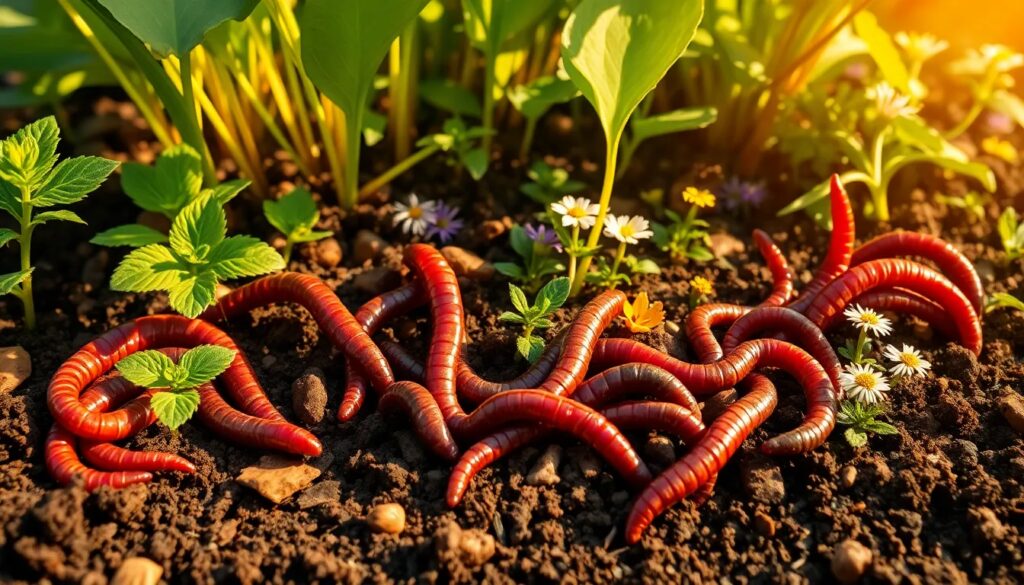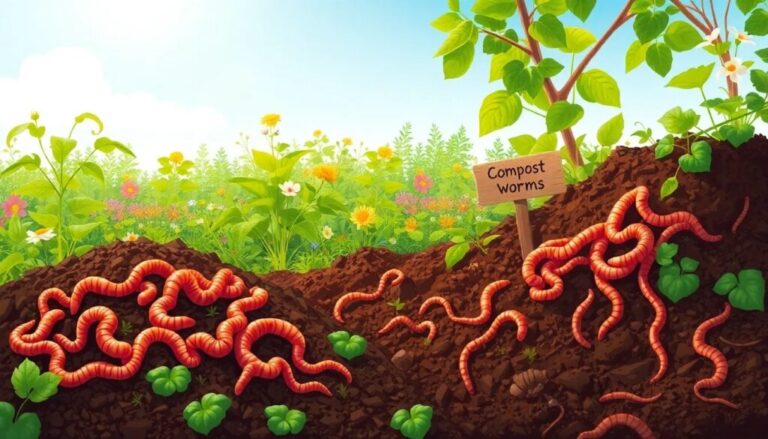What Are The Different Types of Nightcrawler Worms?
Nightcrawler worms play a vital role in enhancing soil health and facilitating composting. Understanding the different species can help gardeners and fishing enthusiasts make informed choices. In this article, we will explore the characteristics and uses of the most common varieties of nightcrawlers.
What Are The Characteristics Of European Nightcrawlers?
European nightcrawlers, scientifically known as Eisenia hortensis, are known for their exceptional composting abilities. They are smaller than other species and have a slender, elongated body.
One of the most notable characteristics of European nightcrawlers is their ability to break down organic matter quickly, making them an excellent choice for composters.
In addition, these worms can tolerate a variety of environmental conditions, allowing them to thrive in different climates. Their presence in the soil promotes soil aeration and improves compost structure.
European nightcrawlers are also less likely to escape or die in adverse conditions, making them ideal for beginners in composting.
What Are The Best Uses For African Nightcrawlers?
African nightcrawlers, or Eudrilus eugeniae, are a species that is well adapted to warm climates. They are known for their ability to produce high-quality compost and their rapid growth compared to other species.
One of the advantages of African nightcrawlers is that they can be used as fishing bait. Their size and activity make them attractive to many species of fish.
In addition, these worms are highly effective at breaking down organic matter, which benefits soil health in gardens and vegetable patches.
- Ideal for warm climates
- High compost production
- Used as fishing bait
African nightcrawlers are easy to care for, making them a popular choice among gardeners. How to care for African nightcrawlers in your garden is a topic of interest, as proper management can maximize their effectiveness in improving soil.
How Do Canadian Nightcrawlers Compare To Other Species?
Canadian nightcrawlers, known scientifically as Lumbricus terrestris, are the largest of the three species. Their impressive size, often reaching up to 8 inches, makes them ideal for fishing.
One of the characteristics that sets them apart is their ability to burrow deep into the soil, which helps improve soil aeration and drainage. This is key in agriculture and gardening.
Compared to European and African nightcrawlers, Canadian nightcrawlers are more sensitive to extreme temperatures, which can limit their use in certain areas.
In general, they are considered an excellent choice as bait for fishing, especially in cold waters, where their size and movement attract fish.
- Larger and more robust
- Improve soil aeration
- Preferred for fishing
What Are The Main Differences Between Nightcrawlers And Earthworms?
A common question is how nightcrawlers compare to earthworms. Although both are important to the ecosystem, there are significant differences.
Nightcrawlers are typically larger and better adapted to different environmental conditions. In addition, they are more efficient at decomposing organic matter, allowing them to contribute to compost production more effectively.
On the other hand, earthworms tend to be smaller and live in surface layers of soil, which limits them in terms of deep aeration.
Another important aspect is that nightcrawlers are not only useful in gardening, but are also preferred as bait for fishing, which is not commonly the case with earthworms.
Which Nightcrawler Is Best For Vermicomposting?
When it comes to vermicomposting, European nightcrawlers are considered the most suitable. Their size and composting abilities make them the ideal choice for those looking to improve soil health.
African nightcrawlers are also effective, but they require specific conditions to thrive. On the other hand, Canadian nightcrawlers, although large, are not as efficient in this process.
European nightcrawlers’ ability to adapt to various conditions and their speed in breaking down organic matter make them stand out in the world of composting. In addition, their rapid reproduction allows for sustained production of quality vermicompost.
How Can You Identify Different Types Of Nightcrawler Worms?
Identifying different types of nightcrawlers can be easy if you know the key characteristics. For example, European nightcrawlers are thinner and shorter, while Canadian nightcrawlers are robust and long.
Looking at color can also be helpful; African nightcrawlers tend to be darker, while European ones have a lighter hue. In addition, body texture can vary between species.
An effective way to identify them is to observe their movement habits and habitat. Canadian nightcrawlers burrow deeper, while European and African ones prefer more superficial layers of soil.










